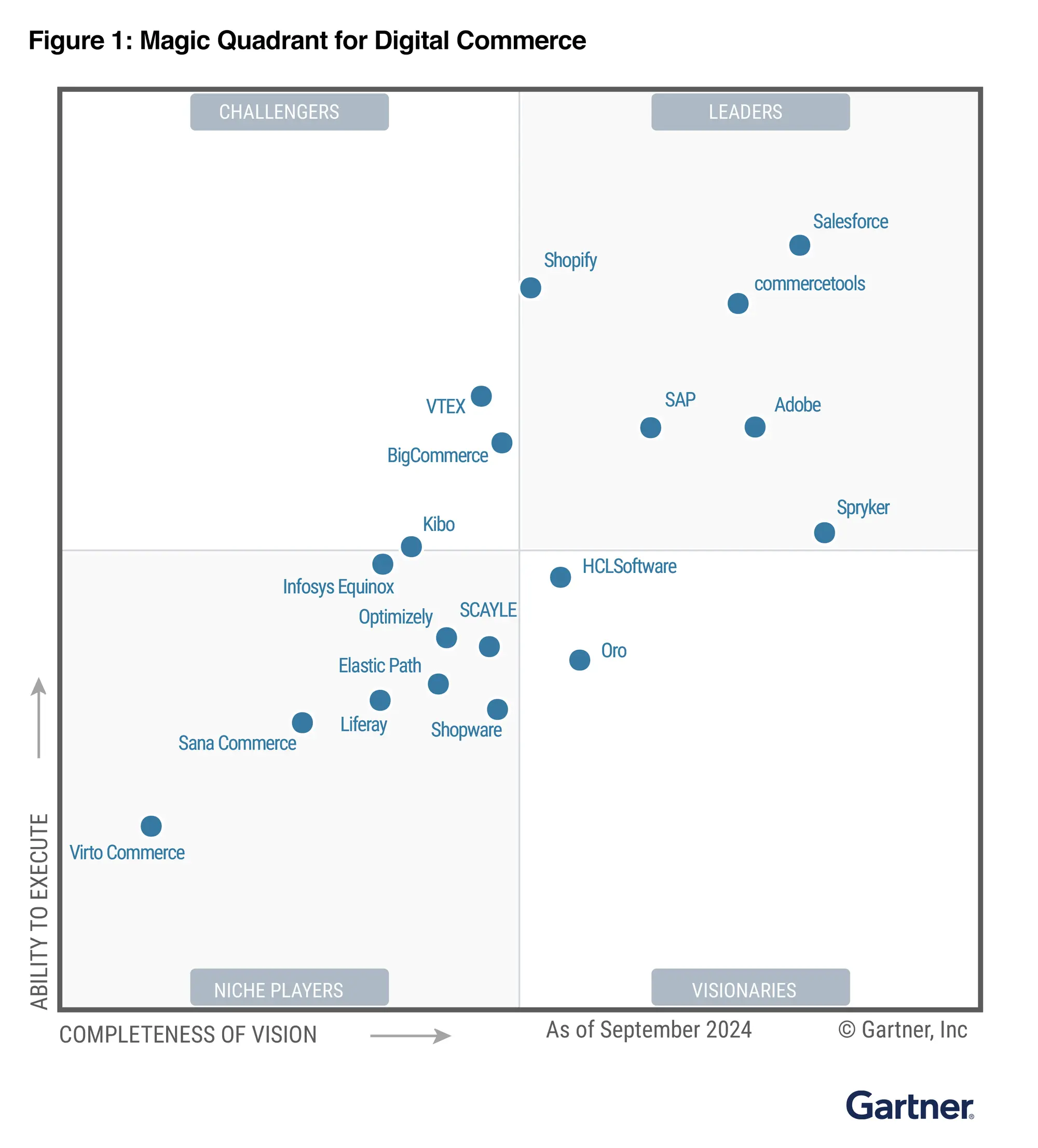
Magento has been one of the world’s most popular and appreciated eCommerce platforms for years. Born as an open source platform, Magento quickly gained ground thanks to its flexibility, customization, and the vast community of developers that supports it. In 2018, Adobe’s acquisition of Magento marked a fundamental turning point, opening new possibilities and an evolutionary path that has now led to the release of Adobe Commerce as a Service, but already renamed by developers and users as Magento 3.
What is Adobe Commerce as a Service?
Adobe Commerce as a Service represents a significant transformation compared to Magento 2. It’s not simply Magento hosted in the cloud, but a completely renewed platform, entirely API-based (GraphQL and REST), designed to better meet the needs of the modern market. This new model allows you to take advantage of a scalable and secure environment, without the need to develop directly on the platform’s source code.
Goodbye to the Traditional Frontend
Magento 3 completely abandons the classic Magento frontend, including Luma and Hyva, replacing them with Adobe Commerce Storefront, a completely headless and open source solution. This allows maximum freedom for frontend developers, who can create highly customized user experiences without previous constraints.
Why did Adobe choose the headless path?
In recent years, Magento has lost ground to SaaS competitors such as Shopify and BigCommerce. These have attracted numerous companies thanks to better performance, lower maintenance costs, and less risk related to platform security and management. Adobe was forced to respond to these challenges by transforming Magento into an “as a Service” product, aiming to resolve the critical issues that most affect companies using the Adobe Commerce platform:
- Improved performance: Magento historically suffered from slowness due to excessive or inefficient customizations. Magento 3 eliminates many of these problems thanks to a headless approach and infrastructure managed directly by Adobe.
- High security: With direct management of the platform and cloud infrastructure, Adobe significantly reduces security risks, a pain point of Magento 2.
- Reduced maintenance costs: Magento 3 eliminates the need for continuous manual and expensive updates, typical of Magento 2. Updates are automatic and included in the service.
Customization in Magento 3
Adobe Commerce as a Service radically changes the way customizations occur:
- AppBuilder: modifications and customizations are no longer done directly on the main Magento code, but through AppBuilder, a separate and API-integrated environment that allows rapid and secure interventions.
- Adobe Exchange Apps: the old “modules” now become “apps,” available through Adobe Exchange. This simplifies integration and ensures higher quality standards.
This approach significantly improves security, stability, and performance, even if it limits transparency compared to the past. However, the benefits far outweigh the compromises.
Other Features from the SaaS Transition
Further features of the new platform have also been outlined:
- Instant Provisioning: deploy new stores in minutes, accelerating time-to-market, without the need for developers.
- Managed SaaS Updates: automatic handling of patches and releases by Adobe, ensuring the platform remains up to date without manual intervention.
- Edge Delivery Services: amazon aws a-z contents to reduce storefront load times and caching content closer to users, resulting in faster page loads and improved user experience.
- AI-Powered Content Creation: using generative AI for personalized content creation, including automated product descriptions and dynamic promotions, improving customer engagement and conversion rates.
- Enterprise-Grade Scalability: support for extensive catalogs with up to 250 million SKUs and 30,000 unique prices per SKU.
The Future with Magento as a Service
Magento 3 (Adobe Commerce as a Service) represents the future of Magento, aimed at merchants who want greater stability, security, and operational simplicity, without sacrificing flexibility. Nevertheless, Magento 2, in its form of Adobe Commerce, will continue to be supported by Adobe for those companies that need total control of the code and complex customizations. The Magento 2 Open Source version, on the other hand, has finished its development, in fact Adobe intends to release only security patches but no new features. Those who want to remain on platform 2 and not go with Adobe Commerce must, as of today, start thinking about going to Mage-OS (but that’s another story).
Adobe’s vision is clear: Magento 3 is a platform designed to compete with the best SaaS solutions, offering superior flexibility compared to Shopify and BigCommerce, especially thanks to its headless and open source architecture on the user front.

Open Source and Magento 3
Many companies fear the loss of the open source aspect, but Adobe has clarified: the Adobe Commerce Storefront remains fully open source. This strategic choice maintains the greatest added value of Magento: the ability to create tailor-made digital experiences without limitations.
Magento 3 (Adobe Commerce as a Service) is a necessary, modern, and forward-looking transformation. Adobe has responded to market demands, resolving chronic critical issues and positioning itself competitively compared to SaaS platforms. And it has a 5-year vision, where developers and experts will no longer be needed for its configuration.
The future of Magento 3 therefore appears promising: superior performance, improved security, reduced costs, and intelligent customization, all integrated into a robust and reliable cloud platform that does not require high knowledge and skills as now.
For companies, this translates into a stable and secure environment that allows them to focus on business growth, freeing them from daily technical problems. An initial wizard configuration that can be done by a Marketing Manager, block-buildable pages, superior performance, extreme security.
The transition to Magento 3 (Magento as a Service) therefore represents a significant opportunity for the future of digital commerce and outlines the offer that a company can join in the coming years, with a wide choice in the enterprise offer between Shopify, BigCommerce, SalesForce Commerce Cloud, Sap Commerce Cloud, VTex.
In the end, Adobe also took the path of simplification in the use and development of the extreme platform, relying on Artificial Intelligence and the solidity of its package.
NdR: HT&T has developed and maintained many important ecommerce with Magento over the years (and still does), starting from Magento 1 (the first version installed was 1.2 with fashionis, a luxury fashion marketplace) and subsequently going through all versions, both open source and enterprise. Today it has various active ecommerce with various technologies and platforms where it takes care of both the technology and the strategic and communication parts.
References to the announcement: Adobe Summit 2025
Continua a leggere
And it consumes less energy.
To return to the page you were visiting, simply click or scroll.


